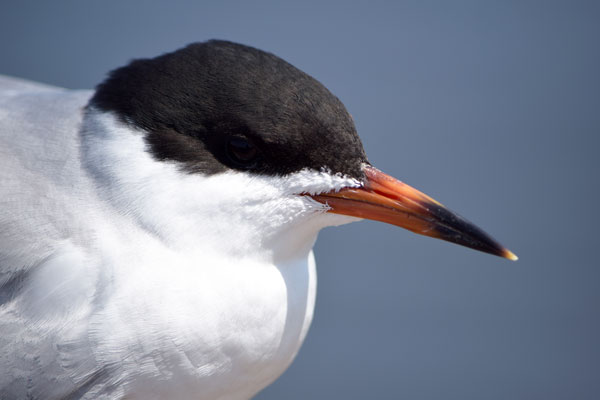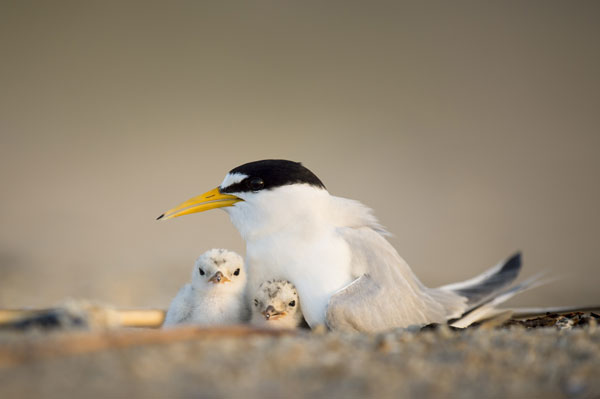The Joys of Birding
Bird watching is a great way to enjoy Montana's outdoors.





The smallest tern in North America, the least tern averages 21 to 24 cm long and has a wingspan of 51 cm. As a state, Montana supports one of the smallest populations of interior least terns. Within Montana, least terns breed on sand and gravel bars along the Yellowstone River, below Miles City, and on the Missouri River, from below Fort Peck Reservoir to the Montana-North Dakota border. Reservoir shoreline at Fort Peck is also utilized in years when water and habitat conditions are suitable.
The interior population of the least tern is listed as endangered because of perceived low population size and threats to its breeding habitat. Alteration of natural river flow dynamics as well as recreational use of sandbar habitat has had a major impact on the reproductive success of the least tern. Consequently, breeding colonies in the interior U.S. are restricted to less altered river segments where there is still suitable habitat.
On May 28, 1985, the U.S. Fish and Wildlife Service listed the population of least tern that occurred throughout the interior of the United States as an endangered species. Endangered species are animals and plants that are in danger of becoming extinct.
The interior population of the least tern is listed as endangered because of perceived low population size and threats to its breeding habitat. Alteration of natural river flow dynamics as well as recreational use of sandbar habitat has had a major impact on the reproductive success of the least tern.
Consequently, breeding colonies in the interior U.S. are restricted to less altered river segments where there is still suitable habitat. Within Montana, least terns breed on sand and gravel bars along the Yellowstone River, below Miles City, and on the Missouri River, from below Fort Peck Reservoir to the Montana-North Dakota border. Reservoir shoreline at Fort Peck is also utilized in years when water and habitat conditions are suitable.
As a state, Montana supports one of the smallest populations of interior least terns, and results from monitoring efforts over the past 19 years show that the state has met and/or exceeded its specific recovery goal of 50 adult birds.
This plan recommends specific management and research activities that we believe are necessary to sustain the population as well as aid long term recovery efforts.
Bird watching is a great way to enjoy Montana's outdoors.
